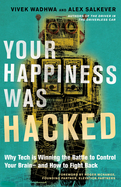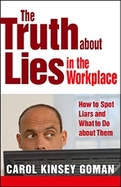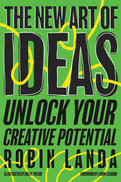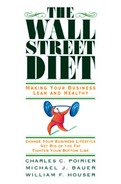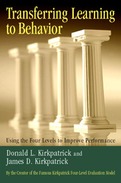—Dean Ornish, M.D. Founder & President, Preventive Medicine Research Institute, Clinical Professor of Medicine, UCSF, Author, The Spectrum
Technology: your master, or your friend? Do you feel ruled by your smartphone and enslaved by your e-mail or social-network activities? Digital technology is making us miserable, say bestselling authors and former tech executives Vivek Wadhwa and Alex Salkever. We've become a tribe of tech addicts—and it's not entirely our fault.
Taking advantage of vulnerabilities in human brain function, tech companies entice us to overdose on technology interaction. This damages our lives, work, families, and friendships. Swipe-driven dating apps train us to evaluate people like products, diminishing our relationships. At work, we e-mail on average 77 times a day, ruining our concentration. At home, light from our screens is contributing to epidemic sleep deprivation.
But we can reclaim our lives without dismissing technology. The authors explain how to avoid getting hooked on tech and how to define and control the roles that tech is playing and could play in our lives. And they provide a guide to technological and personal tools for regaining control. This readable book turns personal observation into a handy action guide to adapting to our new reality of omnipresent technology.
It's critical to catch workplace lies before they snowball into something catastrophic, but most of us have no clue about how to spot a liar.
- The first book to address the complexities of lies in the workplace, where deception can destroy relationships, careers, and companies
- Offers dozens of ways to spot liars and tactical advice on how to deal with them
- Written by a leading workplace consultant and body language expert
- Click here for the press release
Lies aren't good in general, but in the workplace they're especially poisonous. They can destroy employee engagement and productivity, undermine teamwork, increase stress, ruin people's livelihoods, and even bring down entire companies.
It's critical to catch workplace lies before they snowball into something catastrophic, but most of us have no clue about how to spot a liar. And the workplace setting adds another layer of complexity. At what point do you report a liar? If you decide to take action, what exactly should you do? And what if the liar is your boss?
In this entertaining and needed book, leading workplace body language expert Carol Kinsey Goman combines her own experiences with the latest research to provide a comprehensive guide to spotting, exposing, and minimizing workplace lies. Goman looks at the high cost of workplace deception for individuals and organizations, why people tell lies at work, and the kinds of lies they tell. She offers fifty ways that body language and vocal cues can help you spot a liar and explains how our own vanities, desires, self-deceptions, and rationalizations allow us to be duped.
Once you spot a lie, she provides tactical advice on how to respond, whether the liar is above, below, or on the same level as you. And Goman explains how to make sure your own body language doesn't inadvertently make you seem untrustworthy and what leaders at all levels can do to reduce lies and encourage candor.
Some workplace lies are a polite and positive part of professional life ("I'd be delighted to come to that meeting"). But Goman focuses on truly destructive lies and shows how you can prevent them from wreaking havoc on individuals and organizations.
2022
Most professionals cannot generate a solid idea. They either offer up tired or reused ones, or they generate lots of ideas but none that are worth pursuing.
A great idea presents a well-formulated thought or plan of action that spurs growth, change, advancement, adaptation, or new insight. Worthwhile ideas move the needle; they change the playing field altogether.
The New Art of Ideas is designed to help readers consistently produce worthwhile ideas by becoming nimble and imaginative thinkers better equipped to compete and produce in a global economy. Robin Landa identifies the Three Gs of every good idea:
Goal-Your vision for the end
Gap-The underdeveloped area that your idea fills
Gain-The overall benefits of your goal
With explanations and examples of each component, this book demystifies the process of effective ideation and hands you the key to unlock your creative potential.
2006
Businesses trying to stay lean and fit face the same challenges as human dieters--success requires fundamental lifestyle changes and sustained, continuing effort. And, like human dieters, businesses, too, are susceptible to the come-ons of the latest quick-fix fads, which often deliver short-term gains but fall short in the long run. Eventually they go back to their old habits and they're right back where they started. It's a vicious cycle.
The Wall Street Diet uses a diet metaphor to illustrate a complete, integrated approach to what every business must do to become a lean, healthy enterprise. Like a truly effective weight loss program, it is a plan for achieving sustained benefits--following the Wall Street Diet will add five to eight points of potential new profit to a business's bottom line.
Using the proven concept of total enterprise optimization (TEO) as a framework, the book introduces a fitness program that brings together lean techniques, advanced supply chain management, improved quality concepts, selective outsourcing, and a focus on both the top and bottom lines. The authors detail specific TEO efforts that add savings and create new values, demonstrating the synergy to be had by combining those efforts with improved consumption data and analysis and innovative partnering with allied businesses. Fundamentally, The Wall Street Diet is about changing the culture that drives the business, leading to better earnings, continued growth, and the greatest value for all stakeholders.
- Uses a unique diet metaphor to show businesses how to change their lifestyles and become lean, efficient enterprises
- Offers a comprehensive approach to business growth that ties together a broad spectrum of business practices into one synergistic fitness program
- Includes checklists for senior managers and functional managers and "diet champions" so everyone can chart their progress in implementing the Wall Street Diet
- By the author of the bestselling classic Evaluating Training Programs
- Addresses today's most difficult training challenge: transferring what's taught to actual employee performance
- Includes best practice case studies from a dozen top-performing companies
Donald Kirkpatrick's famous four level model has become the model for evaluating the effectiveness of training programs. In Transferring Learning to Behavior, Donald and his son James show how this model can be used to confront what has always been the most difficult training challenge: getting people to apply what they learn once the training is over.
This book begins with an overview of the current state of the four levels, and outlines the three main reasons for the fatal disconnect between learning and behavior. Part II describes the five foundations for success that must be in place before moving on to confront the true challenge of transferring learning to behavior. Part III addresses the main question, showing precisely how to ensure that there is organizational support, and employee and managerial accountability, for putting the new behaviors into practice. The book closes with 12 best-practice case studies from companies such as Toyota, First USA Bank, Nextel, and Anthem Blue Cross/Blue Shield, that bring alive the concepts, principles, and techniques presented throughout the earlier chapters.
Now, more than ever, the pressure is on to demonstrate concrete results from training--but techniques like Return on Investment calculations aren't impressive if it's obvious that new behaviors aren't becoming business as usual. Transferring Learning to Behavior shows how an already proven model can be applied to solve this most difficult problem and produce concrete results.
- By the author of the bestselling classic Evaluating Training Programs
- Addresses today's most difficult training challenge: transferring what's taught to actual employee performance
- Includes best practice case studies from a dozen top-performing companies


